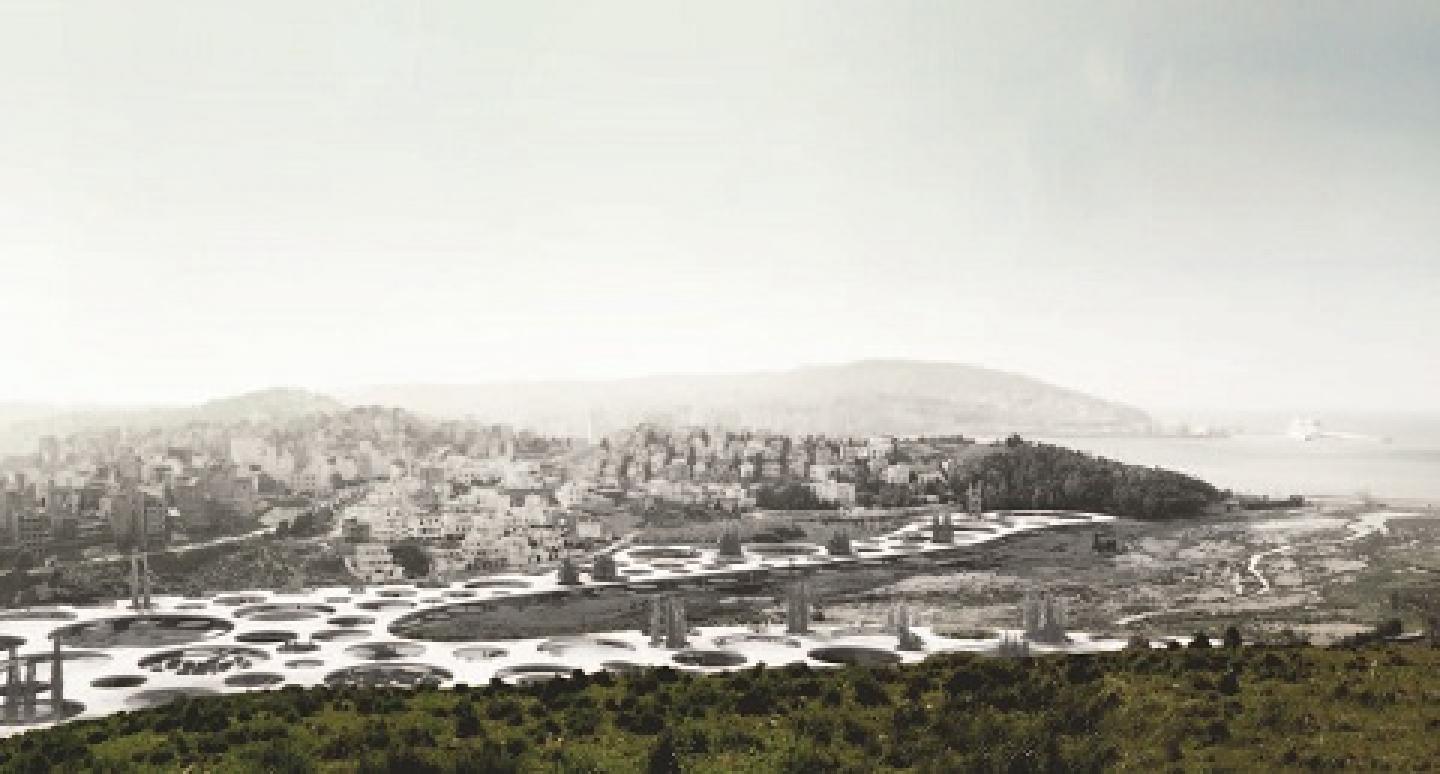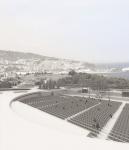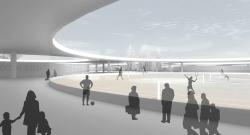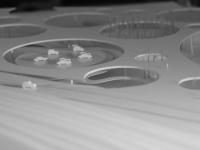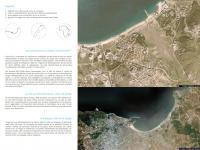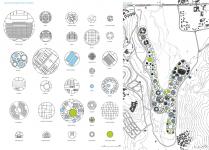Dominating the south bank of the Straits of Gibraltar, about fifteen kilometers from the south of Spain, Tangier sits at the intersection between Europe and Magreb. Due to its geographic location, the city has recently enjoyed an economic upturn. With a population of over 700,000 inhabitants, Tangier is second only to Casablanca as Morroco’s largest economic hub. The population of the city is very young. It is a city abandoned by culture. But while there is little to offer, demand remains high. There is a real desire among young people today to invest in art and culture. Many music, theatre, and film festivals take place in Tangier, and interest in this type of event is growing. This desire to renew the cultural richness of the city is led by many local artists, who agree that it is high time to take part in reconstructing a Tangerian cultural scene.
The location of this project, originally intended for the International Exhibition of 2012, occupies a very interesting site. Located in the center of the city, along 250 hectares of coastline, multiple public facilities had been planned for this area. While Tangier was not chosen to host the exhibition, we can take this opportunity to think about a more lasting approach to developing the site, rather than simply planning for an event.
The landscape of this site is an important element of the project. Specifically, the question of how to accentuate the essence of this dreamlike environment, in order to offer a hybrid urbanity which respects the land. Caught between two hills, the site is composed of three main elements: water, vegetation, and the program itself.
Water is regenerated from the landscape, integrating multiple spatial requirements. It is regenerated using a river water recovery and treatment system, which uses vegetation to filter the lagoon water. Observing the plant species of the region of Tangier, spatial environments were generated, in terms of shadows, optimal temperature and humidity. The various programs and facilities consist of environments that are both independent and interconnected. Spaces are differentiated by size, degree of interiority, and access to light, depending on the nature of the proposed activities.
2010
2010
City : Tangier, Morocco
Architect : Younes Diouri
Program : culture and leisure complex , theaters, cinemas, auditoriums, convention center, steam room, sports facilities, casino, contemporary art museum , mosque, restaurants, shops.
Size : 250000m²
Year : 2010
Younes Diouri
